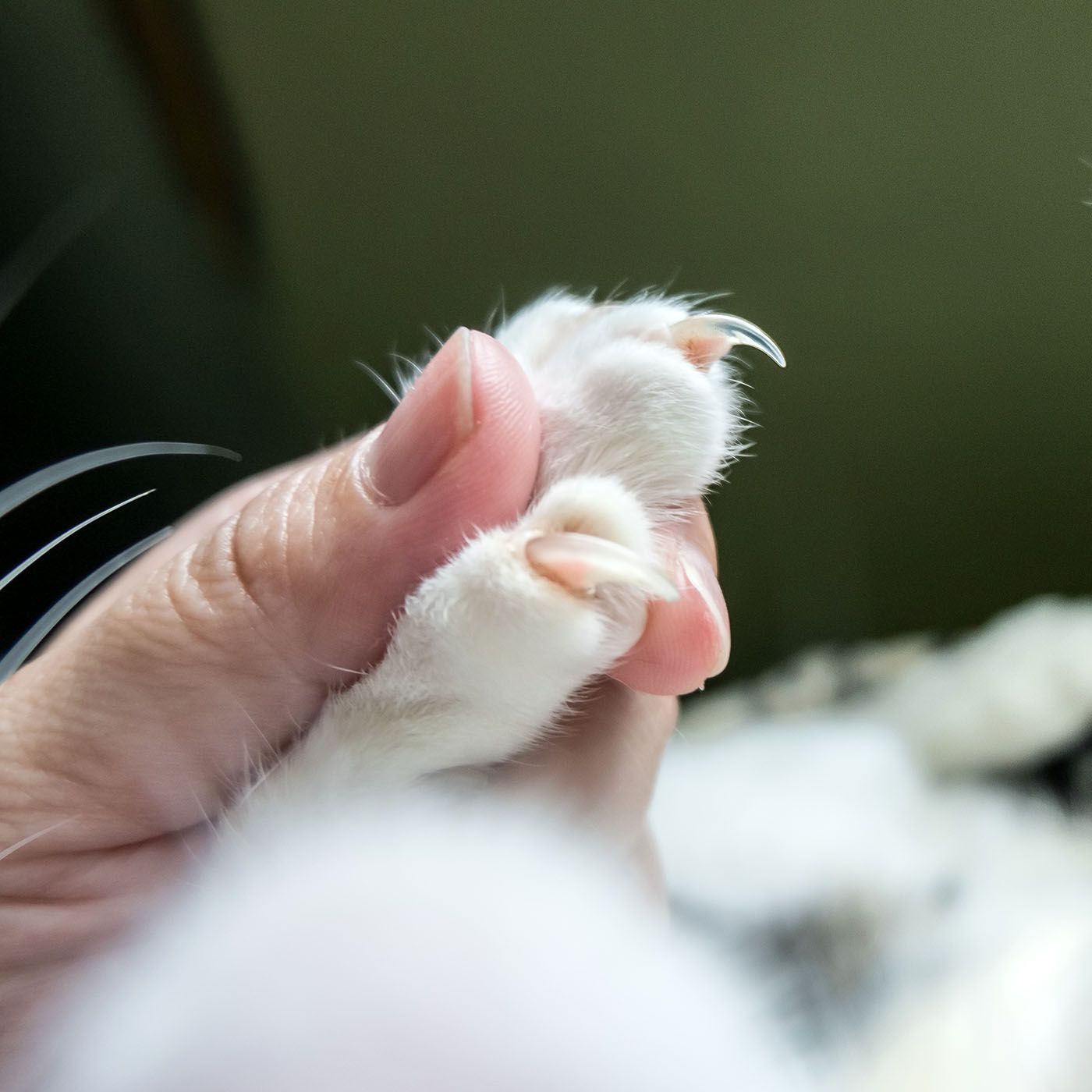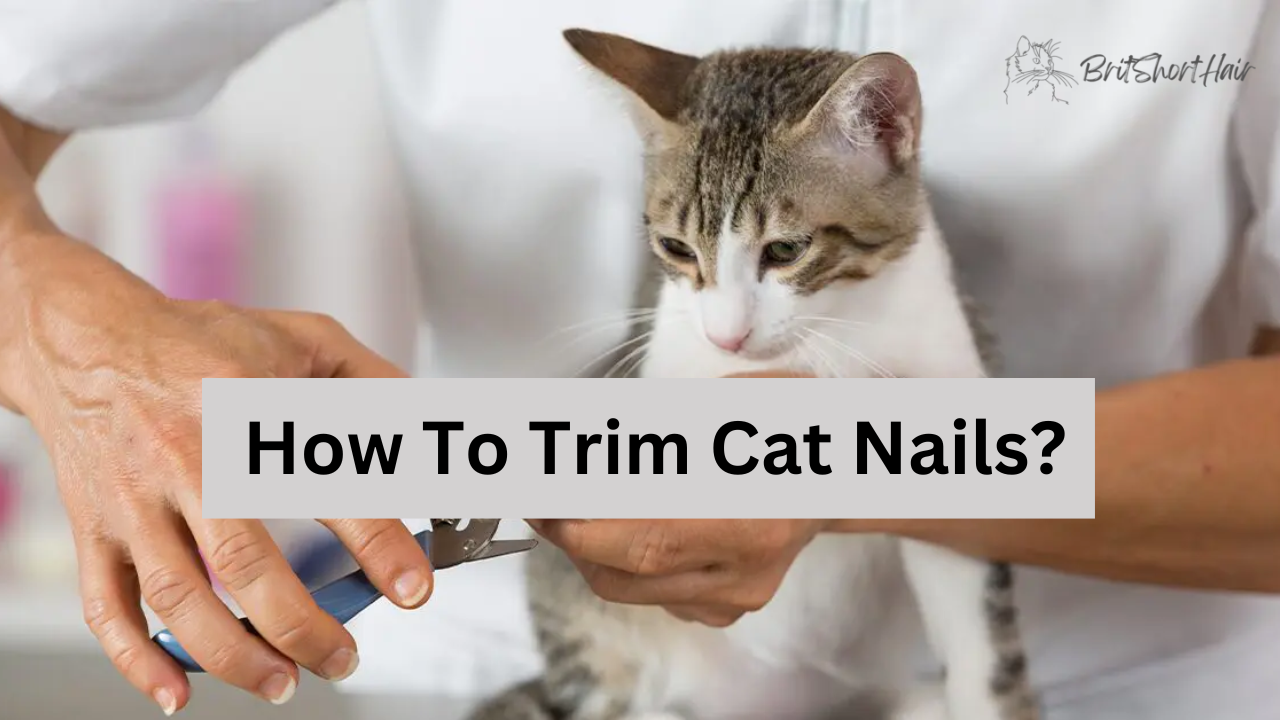Introduction
Mastering the art to trim cat nails is a vital aspect of keeping your feline friend’s paws in perfect condition. It not only promotes their overall nail health but also helps prevent unwanted scratch-related mishaps and potential damage to your beloved furniture and household items. However, embarking on this endeavor can be a daunting task, especially if you and your feline companion are new to the nail-trimming routine. Fear not! This article is here to lend a helping paw, equipping you with the essential instructions and handy tips to trim cat nails like a pro, ensuring both safety and effectiveness throughout the process.

Step 1: Preparation
To guarantee that you have a good session clipping your cat’s nails, you should first prepare a quiet setting and gather all of the essential materials before beginning the process.
Collect the Essential Material
- Cat nail clippers or a cat-specific nail trimmer.
- To stop bleeding from accidental cuts, use styptic powder or cornflour.
- Positive encouragement can be provided through the use of treats or rewards.
- A towel or blanket to wrap your cat in
Select the Suitable Time
You should choose a moment when your cat is most likely to be calm and unconcerned, such as right after it has eaten or finished playing. You should try to avoid cutting your nails when you are tired or just before a stressful event.
Step 2: Helping Your Cat Relax
To guarantee that you have a positive experience when clipping your cat’s nails, it is essential to provide your pet with an atmosphere that is cozy and safe.
Trimming your cat’s nails is an essential part of their grooming routine, but it can be a difficult procedure if your feline buddy is nervous or unfamiliar with the process. Getting your cat comfortable and relaxed before a nail trim cat nails session is critical for a pleasant and stress-free encounter. Here are some actions you may take to put your cat at ease:
Introduce your cat to the nail trimming procedure gradually. Begin by simply showing them the nail clippers and allowing them to sniff and inspect them.
Make a positive association with the trim cat nails session by providing treats, praise, and prizes during and after each engagement. Use treats or a favorite toy to reward your cat for remaining calm and cooperative throughout the process.
Get your cat used to having their paws touched. Begin by softly rubbing and massaging their paws during petting sessions. Gradually graduate to putting light pressure on their nails, replicating the sensation of trimming without really cutting them.
Desensitize your cat to the sound and sensation of nail clippers. Practice opening and closing the clippers near your cat without actually clipping its nails. This helps them adjust to the noise and lessens their fear. If your cat becomes stressed or resistant during the process, it is critical to take breaks and allow them to calm down. Pushing them beyond their comfort zone may result in unfavorable connections with nail trims. Patience is essential, and it may take several sessions before your cat fully adapts.
Step 3: Techniques for Trimming
- Hold your cat’s paw softly yet firmly. To naturally lengthen the claws, apply gentle pressure to the pad.
- Examine the nail attentively and look for the pink region known as the “quick.” Be careful not to cut into the quick, as it is delicate and can cause bleeding and discomfort. trim cat nails sharp tip of the nail.
- Hold the nail clippers at a 45-degree angle to the nail and make a quick, clean cut. Begin with modest cuts and eventually trim cat nails more if necessary. Take breaks between each nail to keep your cat relaxed and stress-free.
Step 4: Handling Difficulties While Trimming
If your cat displays signs of resistance or fear during the nail-trimming process, you must approach the issue with patience and empathy. Slow down and divide the procedure down into smaller steps. Begin by just caressing and rubbing their paws, and then reward them with sweets and praise. Gradually introduce the clippers and touch their nails without clipping. Your cat may become more relaxed and cooperative with time.
When their nails are being cut, some cats may scratch or bite. If this occurs, it is critical to prioritize safety. Consider wrapping your cat in a towel or blanket, leaving only one paw exposed at a time. This strategy limits their movement and reduces the possibility of scratching or biting.
Cutting a nail too short by accident can cause pain and bleeding. If you cut the quick (the sensitive part within the nail) by accident, stay calm and apply mild pressure with a clean cloth or styptic powder to stop the bleeding. During this moment, give your cat reassurance and comfort. If the bleeding continues or the nail becomes infected, seek advice from your veterinarian.
If you are having difficulty trimming your cat’s nails or if your cat becomes upset or aggressive, seeking expert assistance from a veterinarian or a professional groomer is an alternative. They have handled difficult cats before and can offer advice or even trim cat nails for you, assuring the safety and well-being of both you and your cat.
Why is it Necessary to Keep Cat Nails Trimmed?

Trimming cat nails is necessary for a variety of reasons. For starters, it inhibits overgrowth, as cat nails grow continuously and can bend into the paw pad if left untrimmed, causing pain and infection. Furthermore, trim cat nails helps prevent accidents because long nails can become hooked and result in ripped nails or broken claws. You prevent both humans and furniture from unintentional scratches and damage by keeping your nails trimmed. Regular nail-cutting sessions also foster cat-owner bonding and good cleanliness by reducing dirt accumulation under the nails. Finally, well-trimmed nails make interactions more pleasant, lowering the danger of unintended scratches during playtime and establishing a safer atmosphere for all parties involved.
Conclusion
To summarise, understanding how to clip your cat’s claws is a vital skill for any cat owner. You can safely and effectively trim cat nails by following the step-by-step instructions in this essay, enhancing their overall health and well-being. Regular nail cutting avoids overgrowth, reduces the chance of injury, protects humans and furnishings, encourages bonding, maintains good hygiene, and enables comfortable interactions. Remember to be patient with the process, provide positive reinforcement, and seek professional help if necessary. With the right care and attention, you may successfully cut your cat’s nails and add to their general happiness and comfort.
hey we have a lot of information on cats you can check out by clicking Bristhorthair.com
wants to follow us on social media

